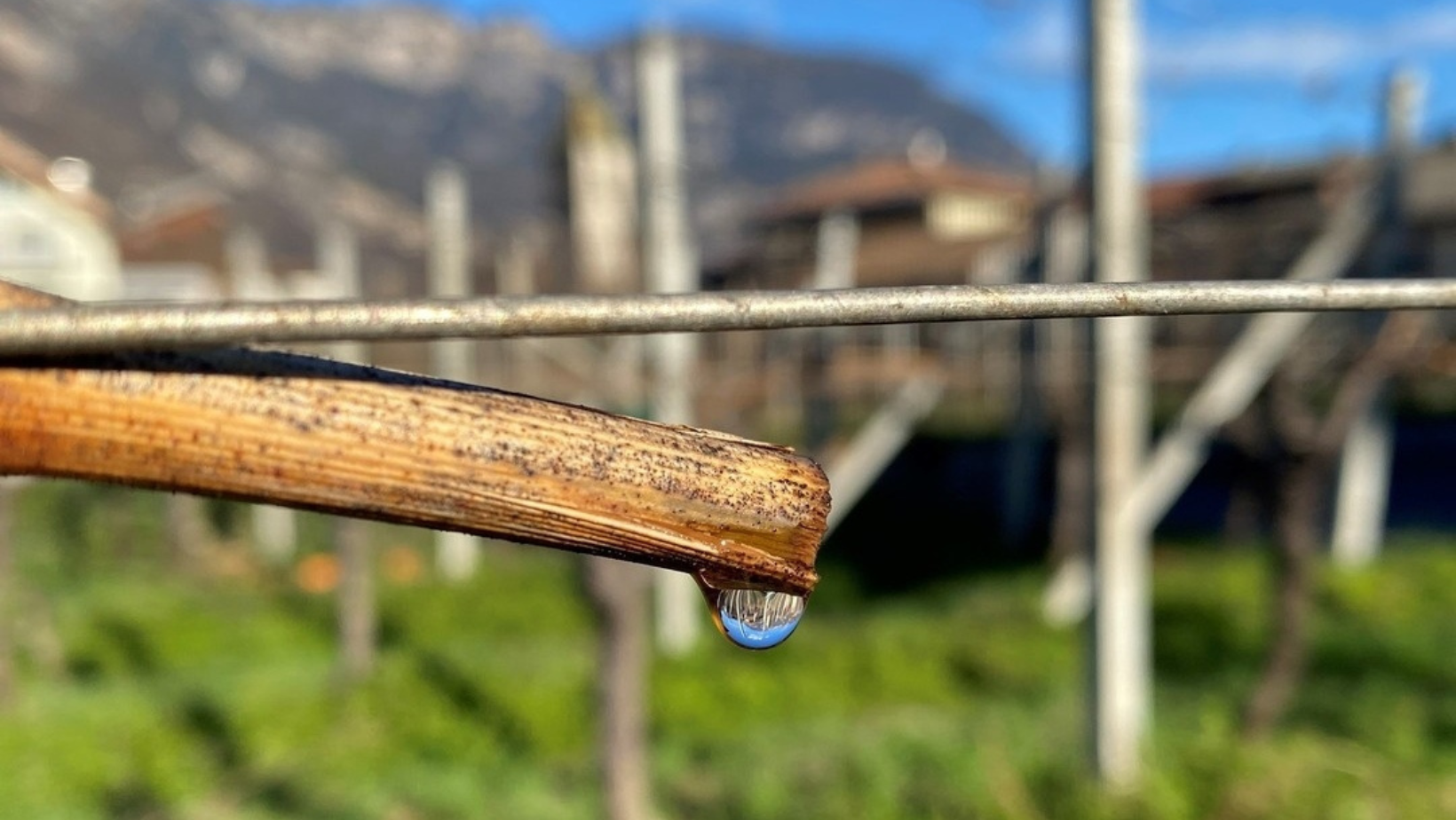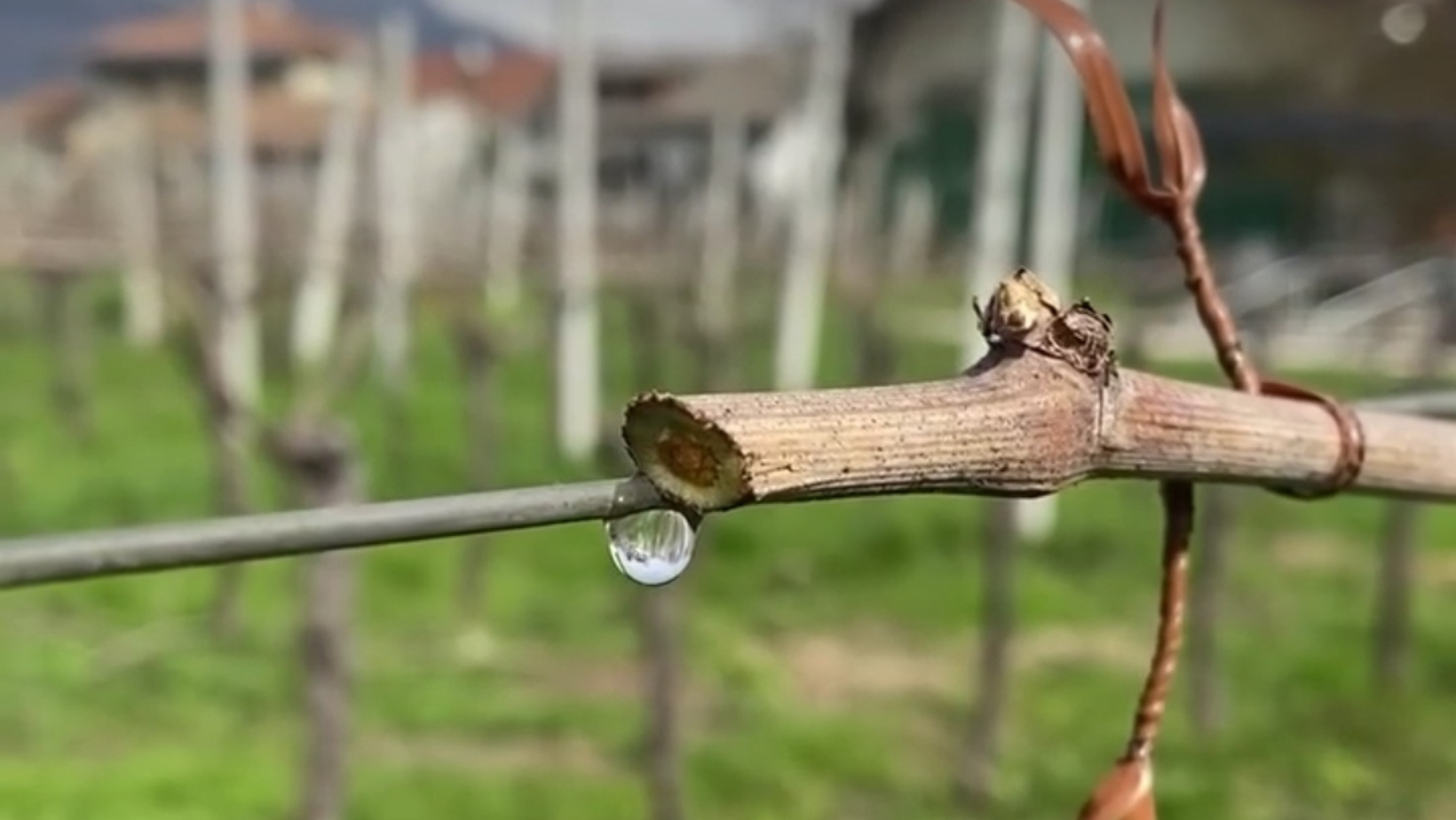What is the weeping of the vine?
You have heard of the crying of the vine, you have heard from a winemaker that the vine cries or you know very well that there is a natural phenomenon called crying of the vine, but you want to understand, specifically, what it is, why and when it occurs.
We are here to answer any questions about vine weeping. We explain to you what vine weeping is, why it happens, what it means for winemakers and we reveal curiosities and traditions linked to this phenomenon.
 Photo: Instagram Weingut - Tenuta Peter Zemmer Südtirol - Alto Adige
Photo: Instagram Weingut - Tenuta Peter Zemmer Südtirol - Alto Adige
What is the weeping of the vine?
The weeping of the vine is a truly evocative phenomenon which has always aroused the curiosity of those who witness it firsthand. It seems like a magical moment, but, in reality, it is a completely natural and authentic event, part of the annual cycle of the vine.
As the expression suggests, the crying or weeping of the vine consists of the slow "escape" of droplets of liquid from the branches of the vine plant. The phenomenon seems like the act of tearing typical of human beings. Hence the adoption of the crying of the vine formula.
If we want to give an even more precise definition of the weeping of the wine we can write that:
➡️ the weeping of the vine is a natural phenomenon characterized by the leakage of sap from the vine branches subjected to pruning.
Now that we have given a first definition of crying vine, let's find out why it occurs and when it occurs.
Why does weeping of the vine occur?
The tears that flow from the vine branches are a very important signal for the winemaker.
➡️ The crying of the vine coincides with the resumption of the vegetative activity of the vine plant.
During the winter, the vine loses its vegetative elements and begins a resting phase. In this period, vital activity is attenuated or reduced to a minimum. The winemakers, in preparation for the spring, carry out a series of operations on the plant. Among these, the most important is the so-called winter pruning or dry pruning, which consists in removing parts of the vine shoots and branches in order to regulate the quantity of bunches that will then grow on each shoot, improving the quality of the final fruit. Furthermore, this operation aims to eliminate unproductive shoots and manage the general structure of the plant.
In spring, accompanied by the increase in temperatures, the vine resumes its vital activities. The sap and nutrients start flowing again, reaching and nourishing the various parts of the plant. When the sap reaches the partially pruned shoots it comes out, creating a tear effect. This is the crying of the vine!
➡️ The crying of the vine is the leakage of drops of sap from the branches subjected to pruning.
Specifically, the sap finds the hole to exit the shoots directly from the "wounds" caused by the winter pruning.
 Photo: Instagram Weingut - Tenuta Peter Zemmer Südtirol - Alto Adige
Photo: Instagram Weingut - Tenuta Peter Zemmer Südtirol - Alto Adige
When does the weeping of the vine occur?
➡️ The crying of the vine occurs in spring, during the period of vegetative awakening of the vine.
These are "tears of joy" for the resumption of the plant's vegetative activity!
The vine weeps between March and April, with temperatures above 10°C. This phase precedes that of budburst, which continues into the summer period, with the opening, growth and development of the buds.
What does the weeping of the vine mean?
As we told you before, the weeping of the vine is a natural phenomenon that has enormous value for the winemaker.
➡️ It reveals that the plant has resumed its vegetative activity after the winter rest. Specifically, it resumes lymphatic activity, cellular respiration and sugar metabolism.
➡️ It helps to heal the pruning "wounds": the sap that reaches the pruned shoots is composed of minerals, sugar, acids and other substances, depending on the vine and the type of soil, which not only contribute to the development of the plant and its fruits, but they also have a healing function, repairing the "wounds" caused by pruning and preserving the health of the plant.
➡️ Indicates the beginning of the budburst: then vegetative and reproductive cycle of the vine continues, until the formation and the maturation of the bunches of the grapes.
Finally, a curiosity about the crying of the vine. In the past, the tears that flowed from vine plants were collected and used to naturally treat a huge variety of pathologies. It was believed that the sap droplets had a regenerating power on the human body equal to that demonstrated on the vine. Today, vine sap extract finds application in very specific areas. It is used in cosmetic products or for skin treatment due to the emollient, antioxidant and regenerative properties of the substances it contains.
If you liked our article or it was useful to you and if you want to continue to have news, updates and curiosities about the world of wine, subscribe to the Wineshop.it wine newsletter. Lots of content and offers await you!








